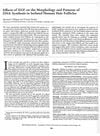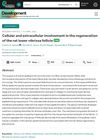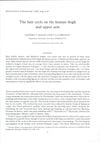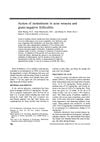The Regulatory Biology of the Human Pilosebaceous Unit
June 1997
in “
Baillière's clinical obstetrics and gynaecology
”
pilosebaceous unit homeotic genes transcription factors growth factors adhesion molecules epidermal growth factor transforming growth factor-α anagen phase categen phase insulin-like growth factor-I transforming growth factor-β interleukin-1-α tumor necrosis factor-α matrix cell death steroid hormones EGF TGF-α IGF-I TGF-β IL-1α TNF-α
TLDR Scientists now better understand how human hair growth is controlled, including the roles of specific genes and proteins.
The document from 1997 discussed advancements in understanding the regulation of the human pilosebaceous unit, focusing on the roles of homeotic genes, transcription factors, growth factors, and adhesion molecules in hair growth. Key growth factors identified included epidermal growth factor and transforming growth factor-α, which trigger anagen and categen phases, insulin-like growth factor-I, which sustains anagen growth, and transforming growth factor-β, which inhibits it. Additionally, interleukin-1-α and tumor necrosis factor-α were found to induce matrix cell death. The study also began to elucidate the role of steroid hormones in modulating these growth factor effects, contributing to an integrated model of pilosebaceous regulation.





